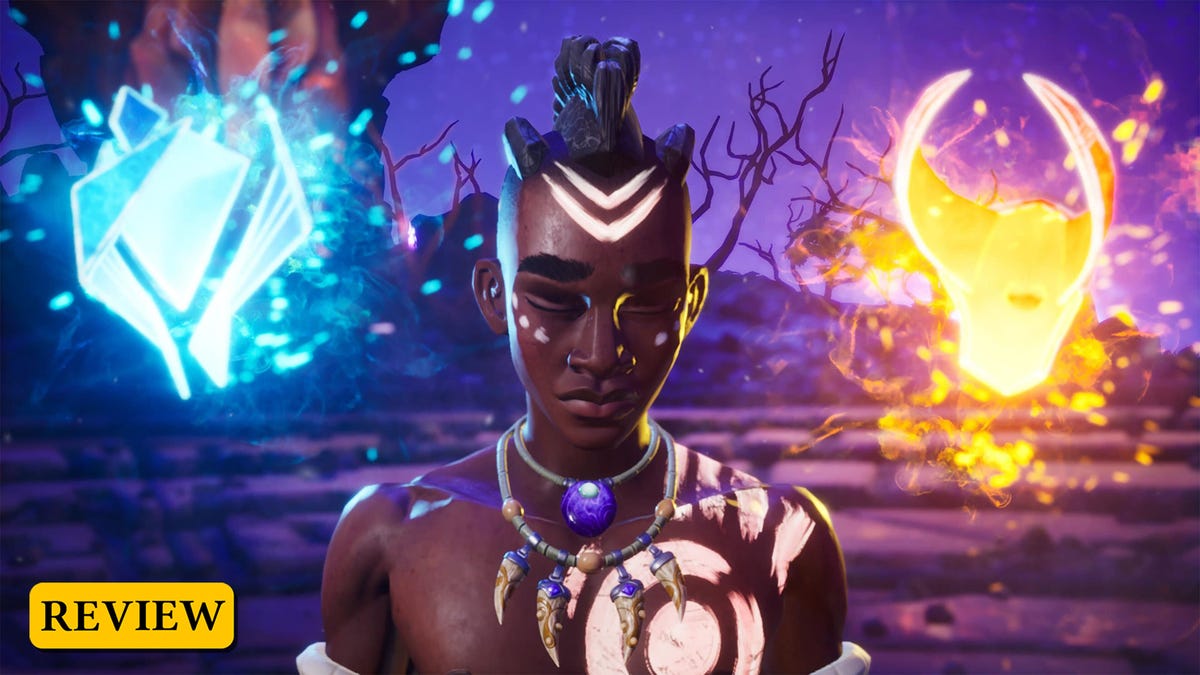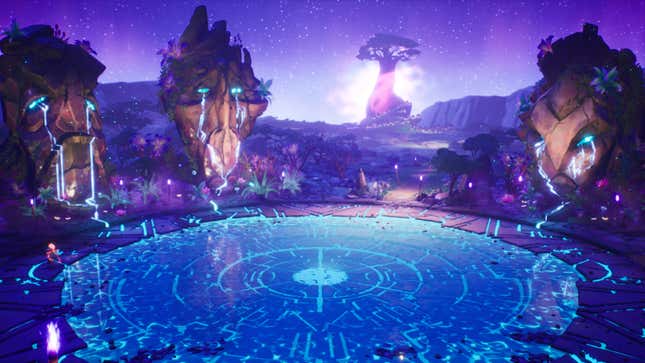Tech
Tales of Kenzera: Zau: The Kotaku Review

“In loving memory of those who touched our lives. This game is a tribute to their enduring spirit,” reads the opening screen of Tales of Kenzera: Zau, the new Metroidvania from EA Originals and Surgent Studios. My lip trembles. “Don’t start crying, you’ve barely started,” I chastise myself.
After all, there’s a lot of game to get through, and the memory of my late grandfather, who died last January after he was hospitalized from a stroke and then caught covid-19 in a rehabilitation center, persists throughout it. Abubakar Salim, actor and Surgent Studios’ founder, made this game as a means of processing his own grief after the loss of his father, so I have a journey ahead of me just like Zau, the titular character. How (and if) we get through it is up to me. No pressure.
Read More: Tales Of Kenzera: Zau Creator On The Pressures Of Black Storytelling
Buy Tales of Kenzera: Zau: Amazon | Best Buy
“Grief isn’t linear,” Salim said during a Tales of Kenzera presentation junket in early April. That’s why the game is a Metroidvania, as the genre eschews linearity, forcing you to switchback over covered ground in order to eventually move forward. I am reminded of Salim’s words as I fight my way through the game’s beautiful world, as I struggle with certain enemies, and even when I turn off my PS5, head out into the real world, and find myself frozen in place by the stabbing knife that is a memory of my Gramps randomly breaking through. Just like in life, Tales of Kenzera: Zau has moments of brevity and wit and joy, intermingled with loss and profound sorrow.
Fighting grief
To get you through its beautiful story with relative ease, Tales of Kenzera cleverly gives you an important toolset from the jump, which helps avoid any of the pitfalls that can often plague a Metroidvania. Zuberi, a young boy who recently lost his father due to a long-term illness, turns to a book his father left him. The protagonist in that book is Zau, a shaman determined to bring his father back after a plague claimed his life. To that end, Zau summons Kalunga the god of death, and promises that he will prove his worthiness in exchange for his father’s return. To do that, he must travel into Kenzera, a land full of lost souls, and confront three of the most powerful spirits. He has help, though—thanks to the teachings of his late father, Zau can harness the powers of the sun and moon with two masks that you can easily swap between by pressing L1.
The mask of the sun gives you powerful melee abilities, while the mask of the moon offers you ranged attacks, and swapping between them is known as “the dance.” It’s an appropriate name, as Tales is balletic and smooth, and the ease with which you can switch between distanced and up-close attacks makes combat fun, if not necessarily all that fresh. As the game progresses, knowing when to swap between attacks becomes crucial. Barrages of enemies require you to move fast and think even faster, swapping to the moon mask’s run-and-gun combat to pick off a ranged enemy atop an outcropping just to immediately don the sun mask to take out a baddie streaking towards you with its unique special—a flaming tornado. Color-coded enemy shields help denote what mask you should be using when, too.
Both masks have their own skill trees you can progress along, and Zau can equip Trinkets (somewhat like the Amulets in Prince of Persia: The Lost Crown) to help him traverse this world. An early one, Bamba’s Stone, lets you freeze enemies, streams, and waterfalls, the latter of which allows you to use them as walls for platforming. Unlike in other Metroidvanias, though, there isn’t a ton of exploring offered by unlocking new abilities, and not too much emphasis on collectibles.
Couple that with combat that can occasionally feel samey (there’s not a ton of enemy types) or too easy (some bosses can be easily felled), and Tales of Kenzera is clearly a palatable, easy-to-approach Metroidvania—appropriate considering the subject matter. I can see this being the kind of game used to teach children (and grief-stunted adults like myself) about loss, and its breezy playability is crucial for that.

A gorgeous Afrofuturist aesthetic
Though Tales of Kenzera: Zau isn’t breaking any boundaries in the Metroidvania genre in terms of combat, it does so everywhere else. It’s obvious from the outset that this game covers virtually unexplored territory in the industry—there are Bantu myths, Ghanaian-inspired music (by composer Nainita Desai, featuring the same choir who lent its voices to Marvel’s Black Panther films), and stunning Afrofuturistic vistas. The colorful world mixes the grounded, natural spaces of West Africa with the vibrant, futuristic structures of a sci-fi city, all set to that stunning score. As you run through its 2D environments, you’ll find plenty of moments that give you pause, whether it’s to ogle a floating island of plants swaying in the breeze or stare at a glistening waterfall as you wonder where it leads.
And the voice acting, led by Salim himself as Zau (you may also recognize him as Bayek from Assassin’s Creed Origins, or as Father in the TV series Raised By Wolves), is pitch-perfect. Salim’s young, strong-headed Zau is set beautifully against the wise and patient Kalunga (Tristan D. Lalla). I found myself smiling every time the two butt heads, even if it’s after a series of untimely deaths (mainly environmental, I am ham-handed and suck at platforming). You settle into a rapport with them as easily as you pick up Tales of Kenzera’s combat, and though there’s a sense of easygoing camaraderie to it all, writing dialogue that feels this effortless is anything but easy.
The light moments are punctuated by occasionally intense bouts of grief, but the pacing is so good I manage—aside from that moment when I first started the game—to get through Tales of Kenzera without descending into hysterics. As I play, it truly feels like this game is helping me along my grief journey, grabbing me by the hand to lead (and sometimes drag, like through the rough platforming spots) me through.
There is something very special at play in Tales of Kenzera, something that feels like it transcends video games and expands into a larger cultural commentary. Salim has said multiple times that this game was made to help him process his own grief, but what he’s created is a beautiful tool for all of us to combat that dark corner in our mind, the prickling of tears in our eyes.
Tales of Kenzera never challenged me to a point where I felt I needed to give up—but it got close, forcing me to stay level-headed and focused during times of emotional strife. When I’d take a break from playing to grab some more coffee, or step outside to greet the UPS person, I’d feel lighter, as if I had just finished a particularly helpful therapy session.
Grief may not be linear, but life is, and my grandfather’s ended in a way I wouldn’t wish upon my worst enemy—he was a DNR (do not resuscitate) patient, so after the stroke compromised his ability to eat and covid wracked his body, he slowly starved to death.
Thinking about the manner in which he passed has crippled me this last year or so, and coming to terms with it has been a nigh-impossible task. It wasn’t until the last session I played before sitting down to write this review that I felt a lightness about his passing that I hadn’t felt before. Tales of Kenzera helped me process the worst loss I’ve yet faced, and for that I can’t recommend it enough.
Tales of Kenzera: Zau is out on April 23 for Nintendo Switch, PS5, Xbox Series X/S, and PC. It’s a short game (you’ll need about 8 hours to beat it), with a reasonable price point ($17.99). I played it on PS5 with a code provided by EA.
Buy Tales of Kenzera: Zau: Amazon | Best Buy
.








